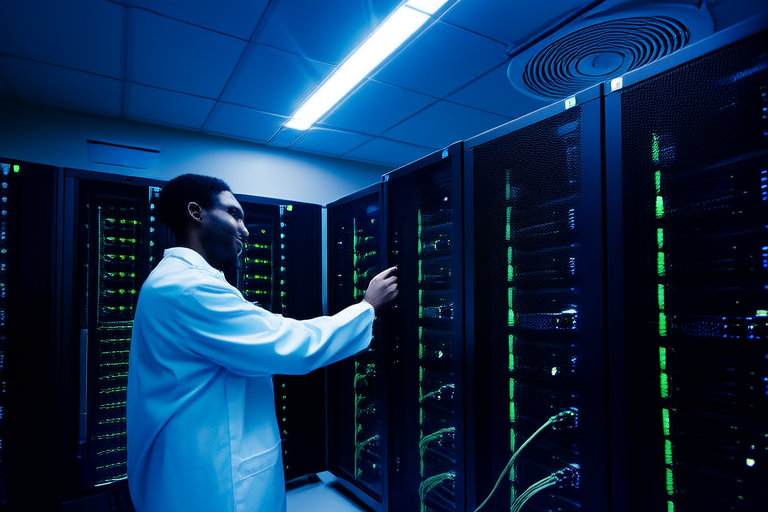“`html
Machine Learning and Deep Learning: Revolutionizing Industries with Intelligent Technologies
Introduction
Machine learning (ML) and deep learning (DL) are two of the most transformative technologies of our time, enabling systems to learn from data and improve over time without being explicitly programmed. These intelligent technologies are revolutionizing industries by automating complex tasks, enhancing decision-making processes, and driving innovation. In today’s technological landscape, ML and DL are indispensable tools that are reshaping the way businesses operate and interact with customers.
This article explores the concepts of machine learning and deep learning, their core principles, and their applications across various industries. We will also examine the challenges and future prospects of these technologies, emphasizing their transformative impact on society and business.
What is Machine Learning?
Machine learning is a subset of artificial intelligence (AI) that focuses on building algorithms and statistical models that enable computers to perform tasks without explicit instructions. Instead, these systems learn patterns from data and make predictions or decisions based on those patterns. At its core, machine learning involves three main components: data, a model, and a learning algorithm.
There are several types of machine learning:
- Supervised learning: Involves training a model on labeled data, where both input and output are known. Common applications include image classification, spam detection, and speech recognition.
- Unsupervised learning: Uses unlabeled data to discover hidden patterns or structures. Clustering and anomaly detection are typical applications.
- Semi-supervised learning: Combines a small amount of labeled data with a large amount of unlabeled data to improve accuracy.
- Reinforcement learning: Involves training an agent to make a sequence of decisions by rewarding or penalizing it based on its actions. This approach is commonly used in robotics and game playing.
Real-world examples of machine learning applications include recommendation systems (e.g., Netflix), credit scoring, fraud detection, and self-driving cars.
What is Deep Learning?
Deep learning is a specialized form of machine learning that uses neural networks with multiple layers to model complex patterns in data. It is particularly effective for handling unstructured data such as images, text, and audio. Deep learning models, often referred to as “deep neural networks,” consist of an input layer, one or more hidden layers, and an output layer.
Two important types of deep neural networks are:
- Convolutional Neural Networks (CNNs): Used primarily for image and video processing. CNNs excel at identifying features in visual data, making them ideal for applications like facial recognition and medical imaging.
- Recurrent Neural Networks (RNNs): Designed for sequential data, such as time series or natural language. RNNs are widely used in speech recognition, machine translation, and sentiment analysis.
Key advancements in deep learning include:
- Transfer learning: Leveraging pre-trained models to solve new problems with less data.
- Generative models: Creating new data that mimics existing patterns, such as generating realistic images or music.
Applications of Machine Learning and Deep Learning
Healthcare
In healthcare, ML and DL are transforming diagnostics, drug discovery, and personalized medicine. For example, deep learning algorithms can analyze medical images (like X-rays and MRIs) to detect diseases earlier than human experts. Additionally, ML models are being used to predict patient outcomes and optimize treatment plans based on individual patient data.
Finance
The financial sector is leveraging ML and DL to improve fraud detection, algorithmic trading, and risk assessment. Banks and financial institutions use machine learning algorithms to monitor transactions in real-time and identify suspicious activities. Meanwhile, deep learning models are employed to predict market trends and optimize investment strategies.
Manufacturing
In manufacturing, ML and DL are optimizing production processes, predictive maintenance, and quality control. Predictive maintenance systems use sensor data to anticipate equipment failures before they occur, reducing downtime and maintenance costs. Similarly, deep learning models are being used to improve product quality by detecting defects in real-time.
Retail
The retail industry is benefiting from ML and DL through customer behavior analysis, recommendation systems, and supply chain management. Retailers use machine learning algorithms to analyze customer purchase histories and recommend products tailored to individual preferences. Additionally, deep learning models are optimizing inventory management and supply chain logistics to reduce waste and improve efficiency.
Transportation
In transportation, ML and DL are powering autonomous vehicles, traffic prediction, and route optimization. Autonomous vehicles rely on deep learning algorithms to perceive their environment and make safe driving decisions. Meanwhile, traffic prediction models help cities manage congestion and optimize public transportation routes.
Challenges and Future Prospects
While machine learning and deep learning offer numerous benefits, they also come with significant challenges. Data privacy, ethical considerations, and model interpretability are some of the key concerns. For instance, ensuring that AI systems do not perpetuate biases present in training data is crucial for fair and equitable outcomes.
Emerging trends like edge computing, federated learning, and hybrid models are poised to address some of these challenges. Edge computing allows AI models to run locally on devices, reducing latency and improving privacy. Federated learning enables multiple parties to train a shared model without sharing sensitive data. Hybrid models combine the strengths of traditional machine learning and deep learning to achieve better performance.
The future of ML and DL looks promising, with potential breakthroughs in areas like quantum computing, neuromorphic computing, and AI ethics. As these technologies continue to evolve, we can expect even greater impacts on industries and society.
Conclusion
In conclusion, machine learning and deep learning are revolutionizing industries by enabling intelligent systems that can learn from data and adapt to changing environments. From healthcare to finance, manufacturing to retail, and transportation to entertainment, these technologies are driving innovation and improving efficiency across sectors.
The transformative impact of ML and DL is undeniable, and their potential for further development is vast. As we continue to explore and innovate in this rapidly evolving field, it is essential to address the challenges and ethical considerations that come with these powerful tools. By doing so, we can ensure that AI systems are beneficial for all and contribute positively to society.
“`


